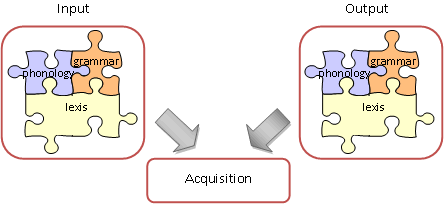ALERT
Acquiring language efficiently: Research and
teaching
ALERT: Acquiring Language Efficiently: Research and Teaching
ALERT is team within the Centre for the Study of Learning and Performance (CSLP)/Centre d’études sur l’apprentissage et la performance (CEAP) at Concordia University in Montreal. The team, funded through a team infrastructure grant (Soutien aux équipes de recherche) from the Fonds québécois de la recherche sur la société et la culture (FQRSC), consists of six Concordia scholars in applied linguistics: Laura Collins (team leader), Walcir Cardoso, Marlise Horst, Kim McDonough, Pavel Trofimovich, Joanna White.
Mission statement
For many language learners, the first significant steps towards
acquiring a new language take place in classrooms. In the province
of Québec where we work, for example, second language (L2) instruction
is compulsory at all levels of the school system and for many adults,
meeting personal and professional goals requires spending additional
time in language classes. However, outcomes in classroom language
learning often fall far short of people's expectations. There are
a number of individual and interpersonal factors that have been identified
as playing a role in successful language acquisition, but one crucial
and often neglected factor is simply time: Language programs typically
offer only a few hours of instruction a week within which learners
strive to become functional users of a new language, and there are
usually practical constraints on increasing instructional time. This
poses a challenge to researchers and educators alike: How can the
precious time spent in language classrooms be used to achieve maximal
effect? Our goal is to identify the linguistic content and pedagogical
practices that will maximize the benefits of instructional time for
L2 learners.
To achieve this goal, ALERT applies an innovative multi-dimensional approach to understanding and enhancing language learning. The multi-dimensional approach refers to an analysis of grammatical (morphosyntactic), lexical, and phonological aspects of a learning problem (such as the past tense in English) with a specific focus on the interactions between these aspects. As the figure below illustrates, in our research we focus on teachers' input to learners and learners' classroom output, investigating the interactions among different dimensions of L2 teachers’ and learners' language use in L2 classrooms. Our overall goal has been to determine the completeness, reliability, and salience of the grammatical, lexical, and phonological aspects of L2 input and output so that we can understand what factors encourage or prevent L2 learners from noticing, processing, and subsequently using these forms when communicating in the L2.

An integrated view of the input/output-acquisition relationship.
The team mobilizes different sources of expertise on second language (L2) acquisition and pedagogy which are normally pursued separately. The result is a novel integrated perspective on identifying the learner-internal (psycholinguistic, cognitive) and learner-external (linguistic, instructional) factors contributing to efficient L2 learning in classroom contexts. ALERT's objectives are:
- to determine how complete, reliable, and salient classroom input is to L2 learners;
- to understand constraints that prevent the input from being noticed, processed, and used to communicate;
- to evaluate, from a multi-dimensional perspective, the learning potential of oral interaction tasks in L2 classrooms;
- to identify instructional techniques and learner practices that facilitate the noticing, retention and communicative use of language;
- to create evidence-based learning tools for language teachers
and future researchers.